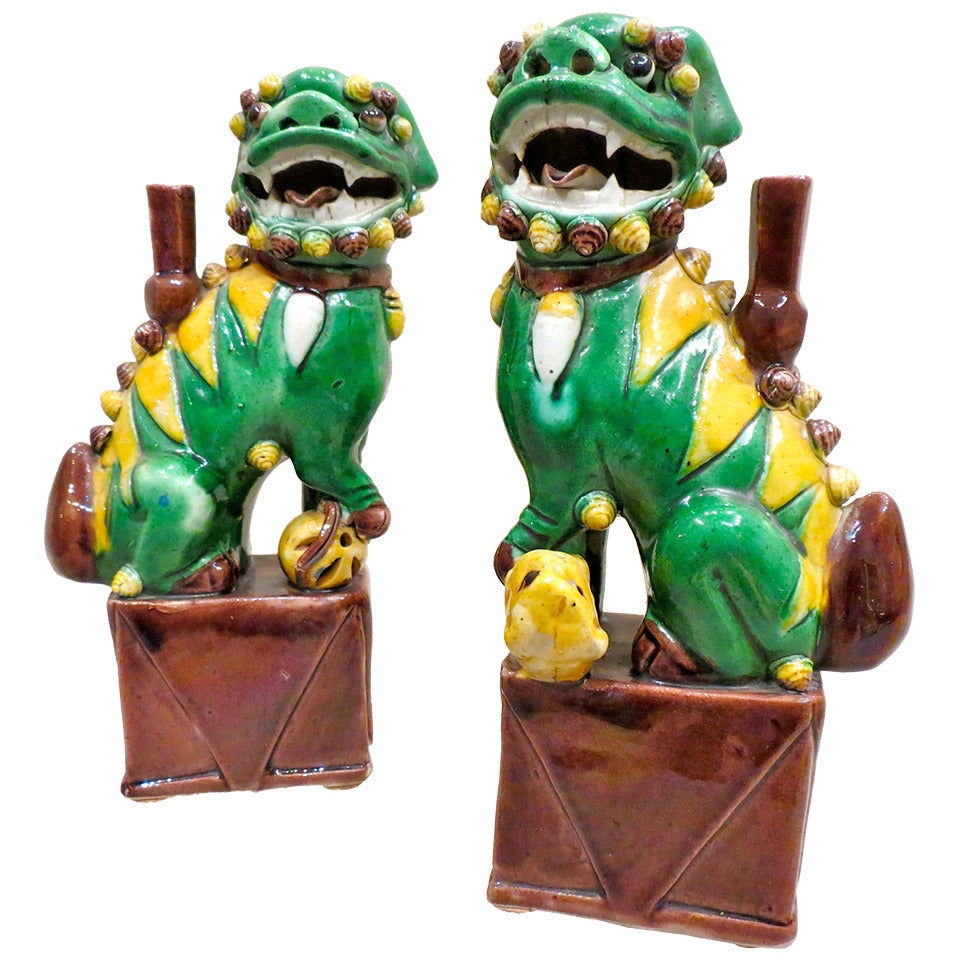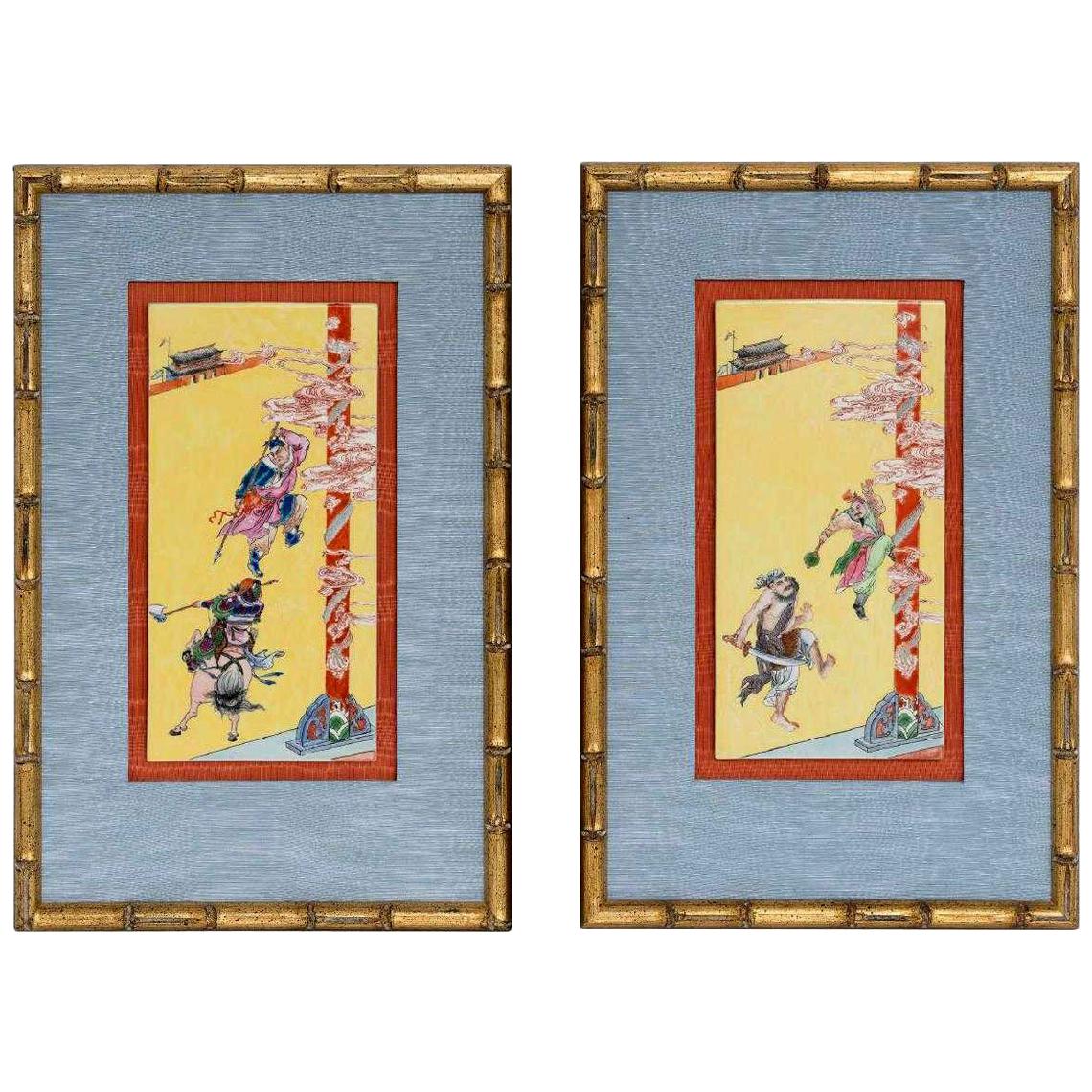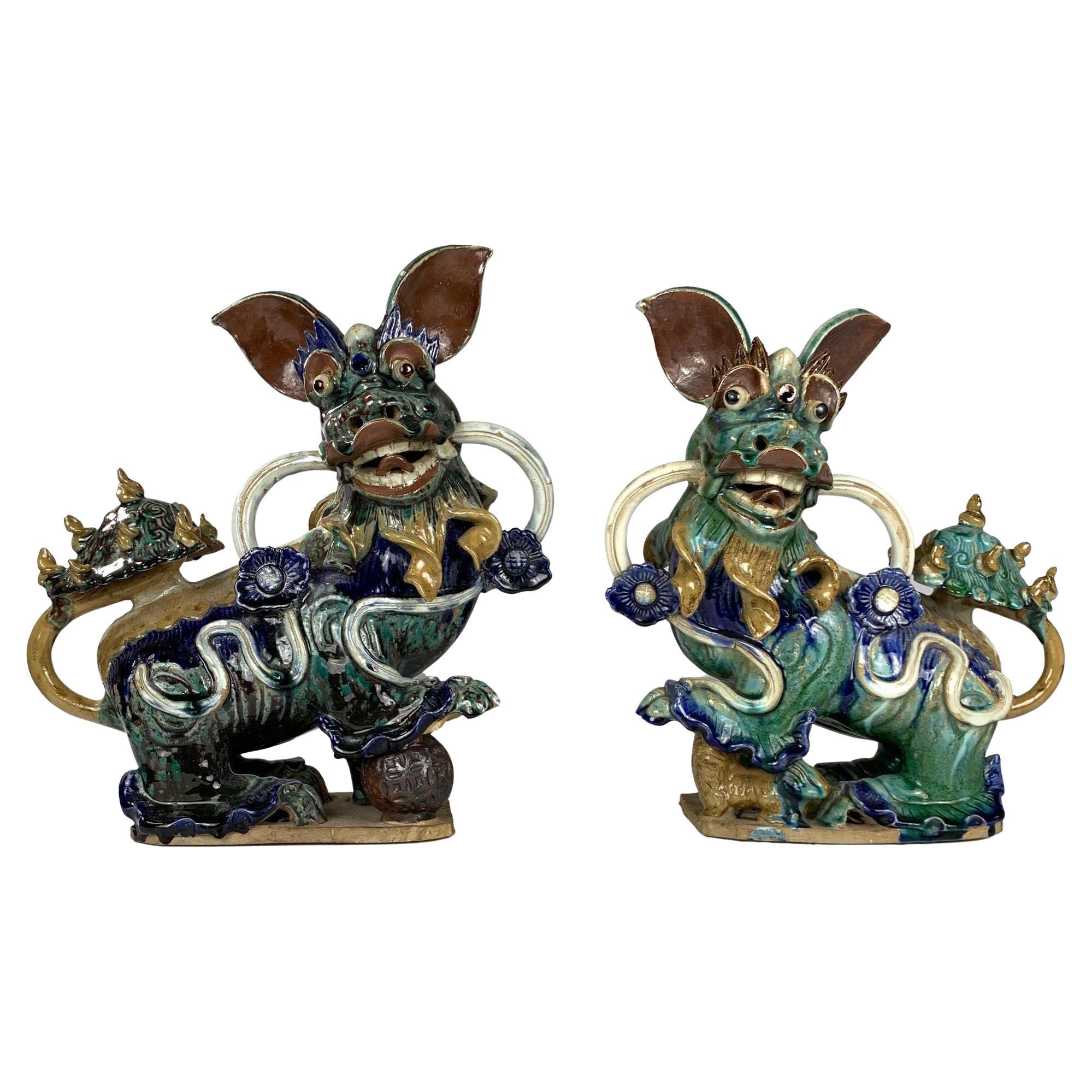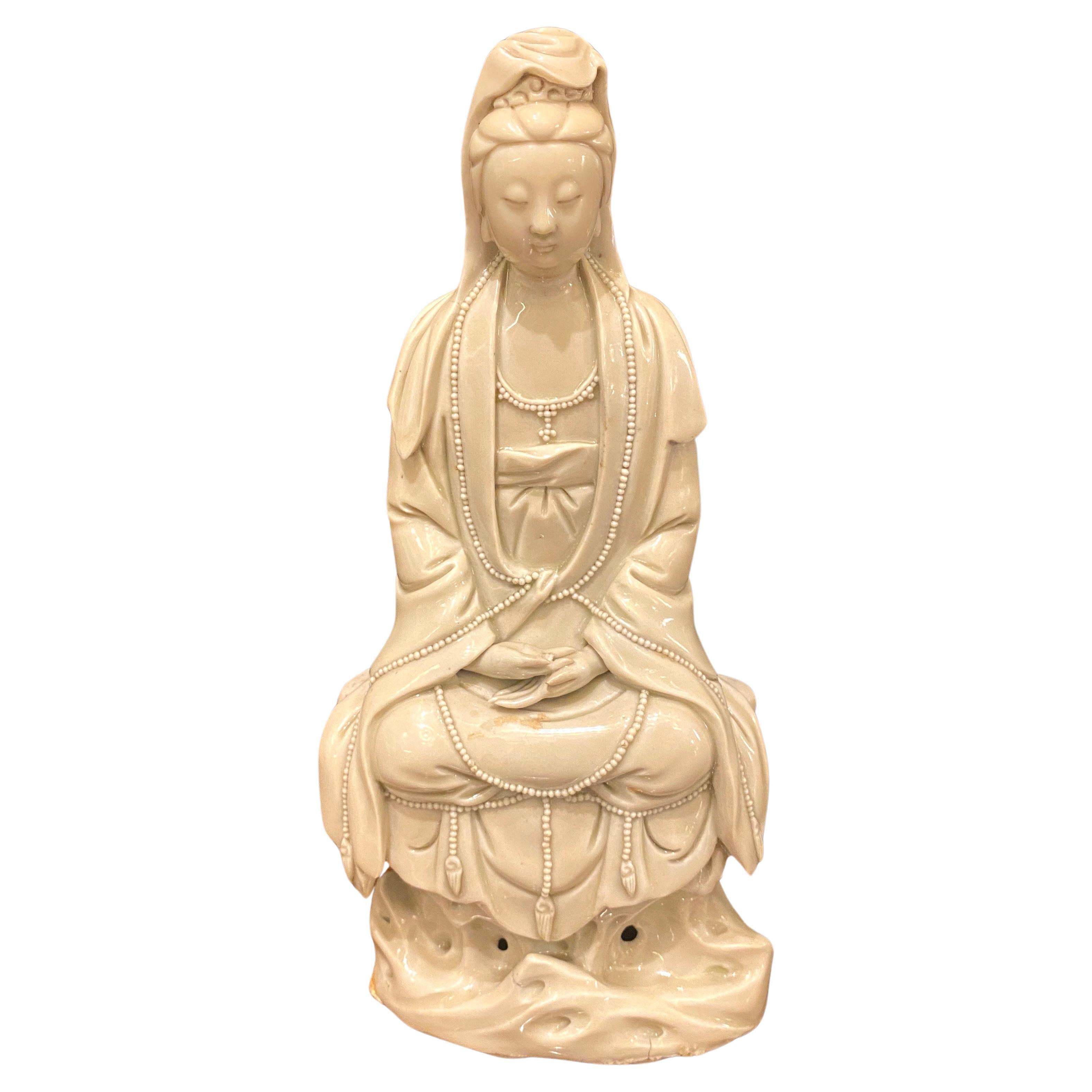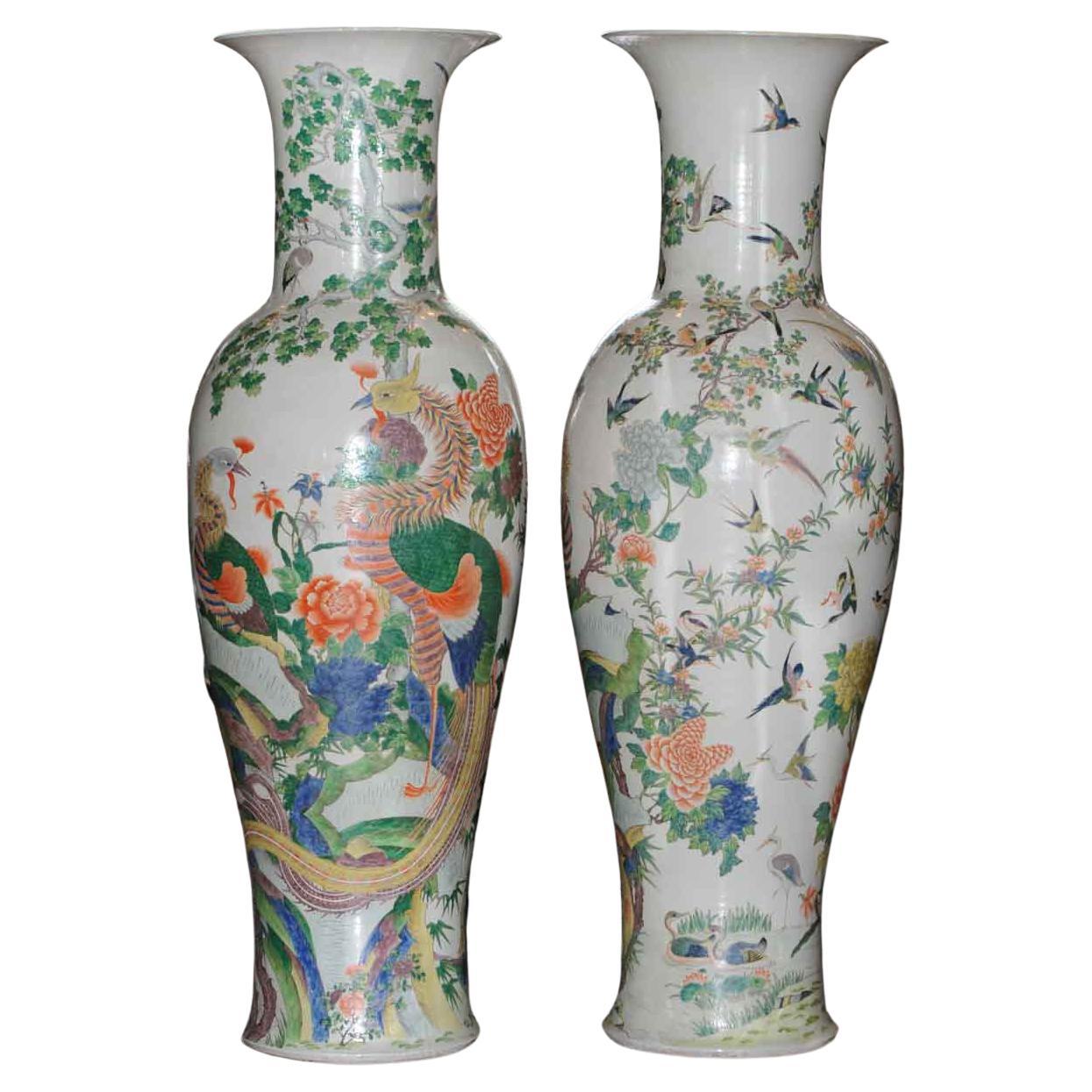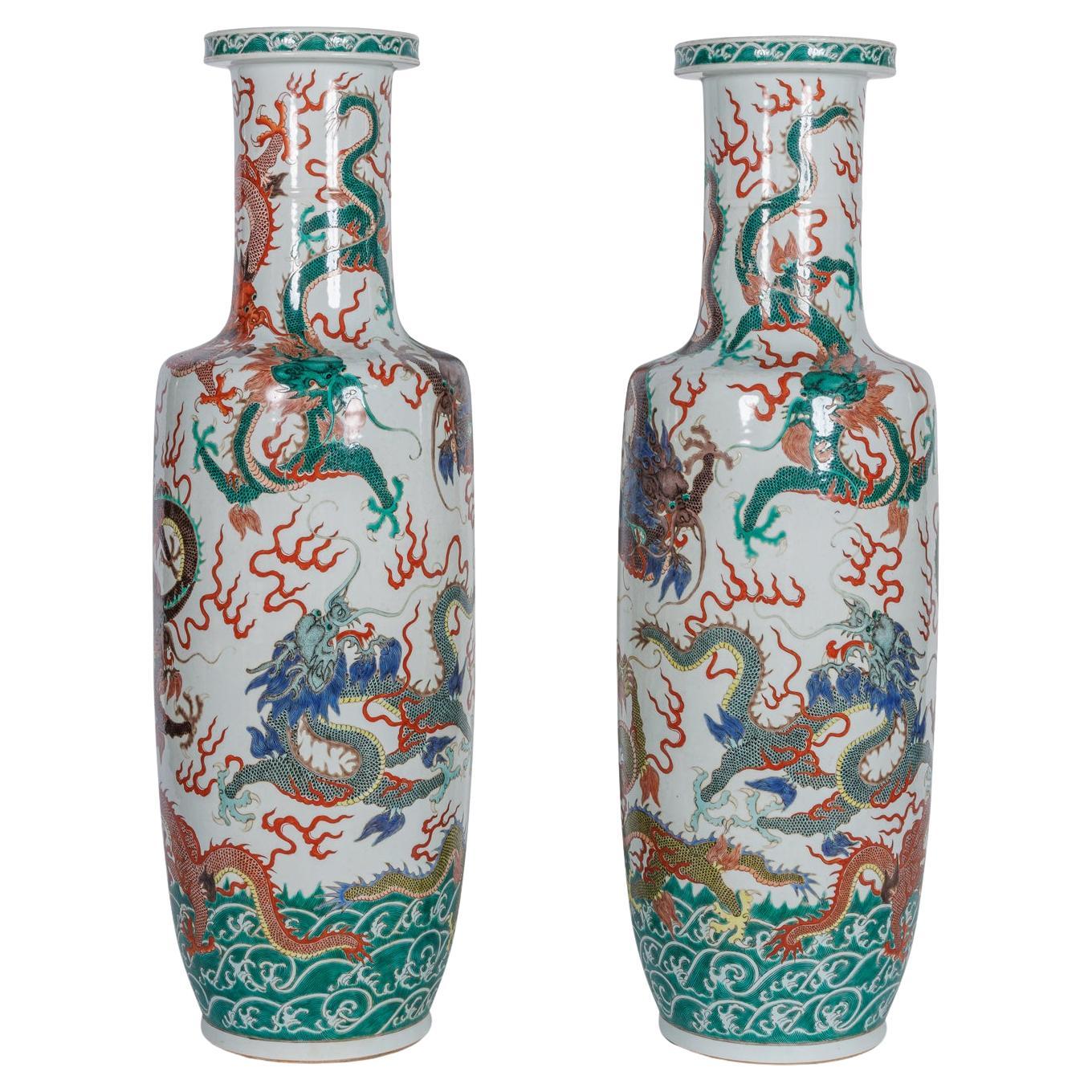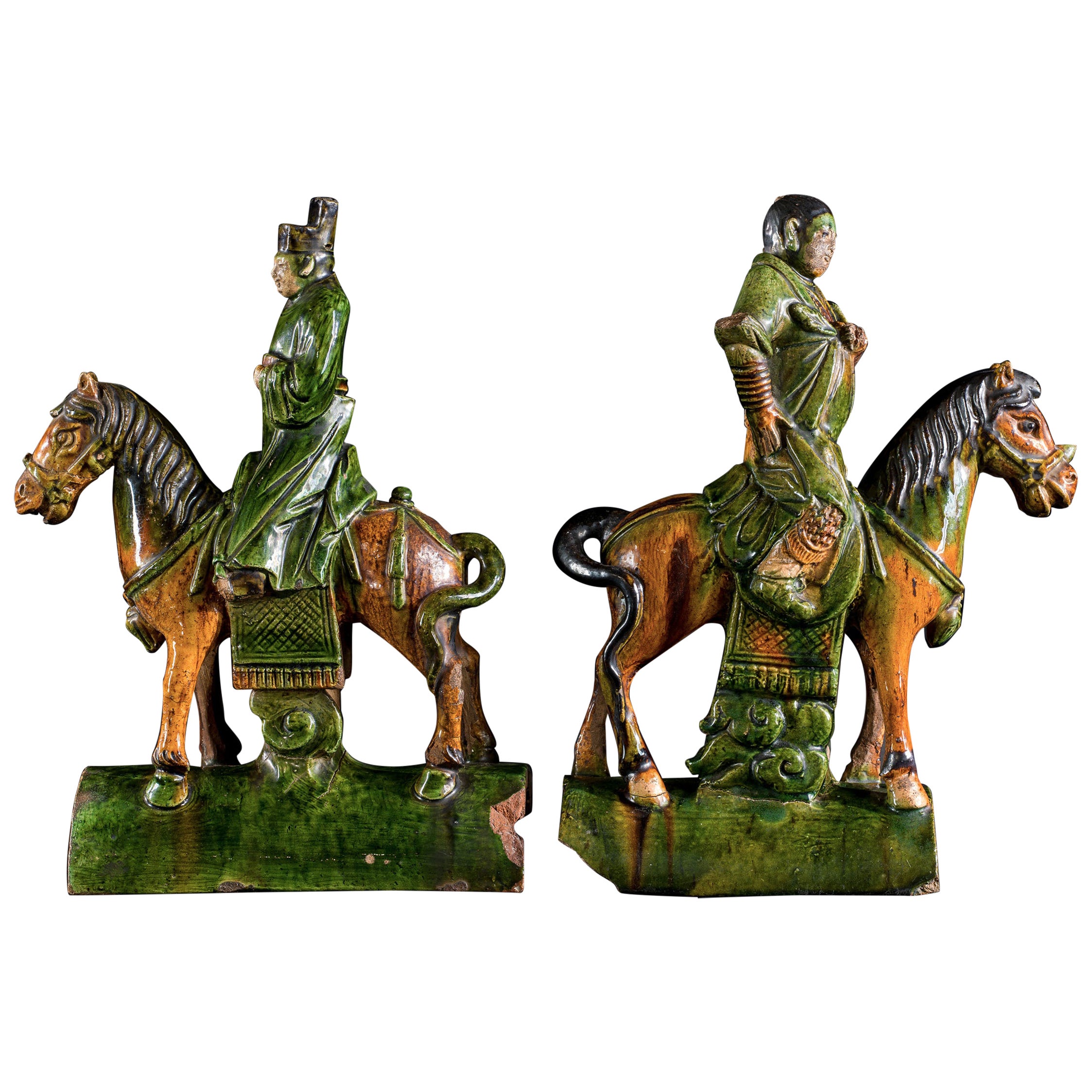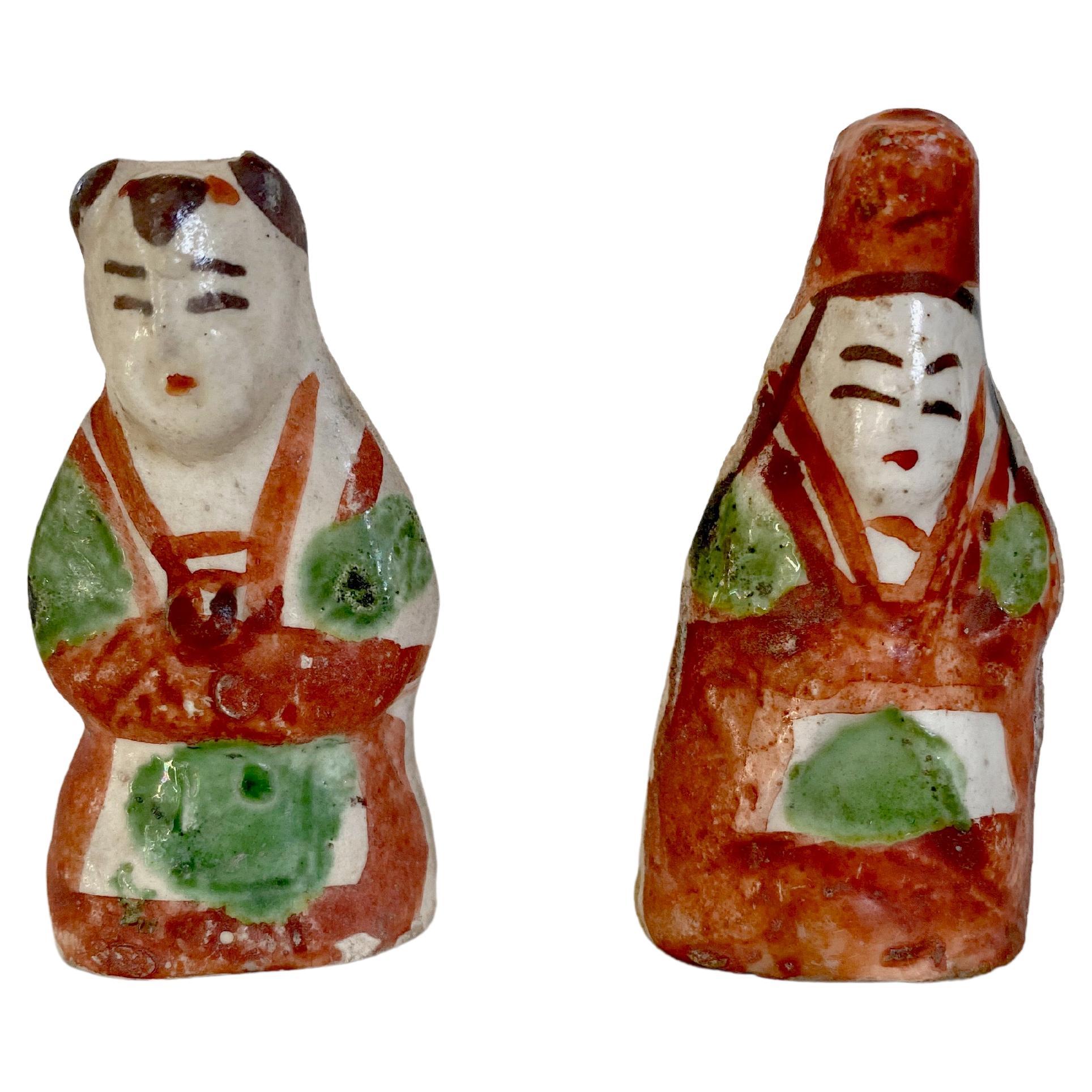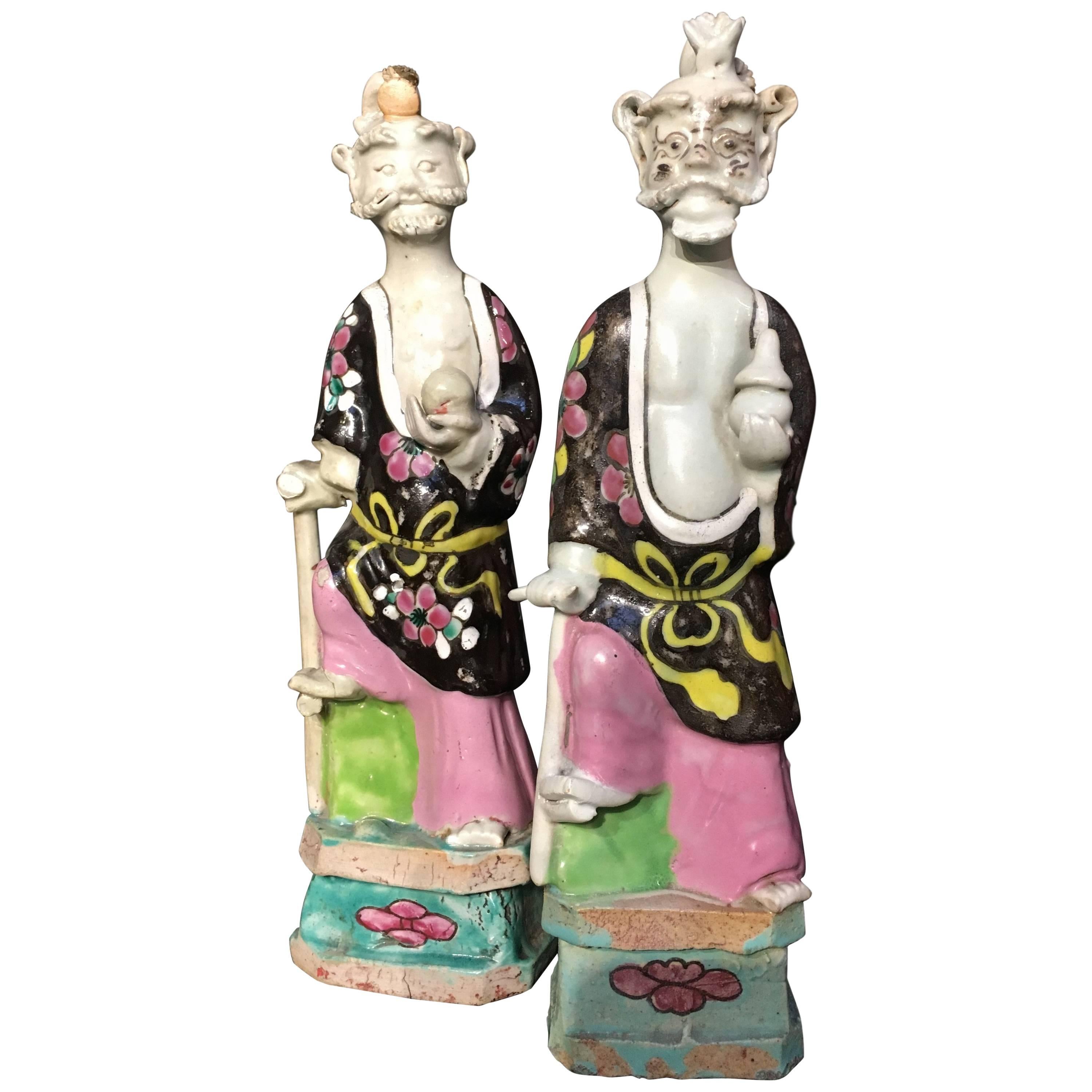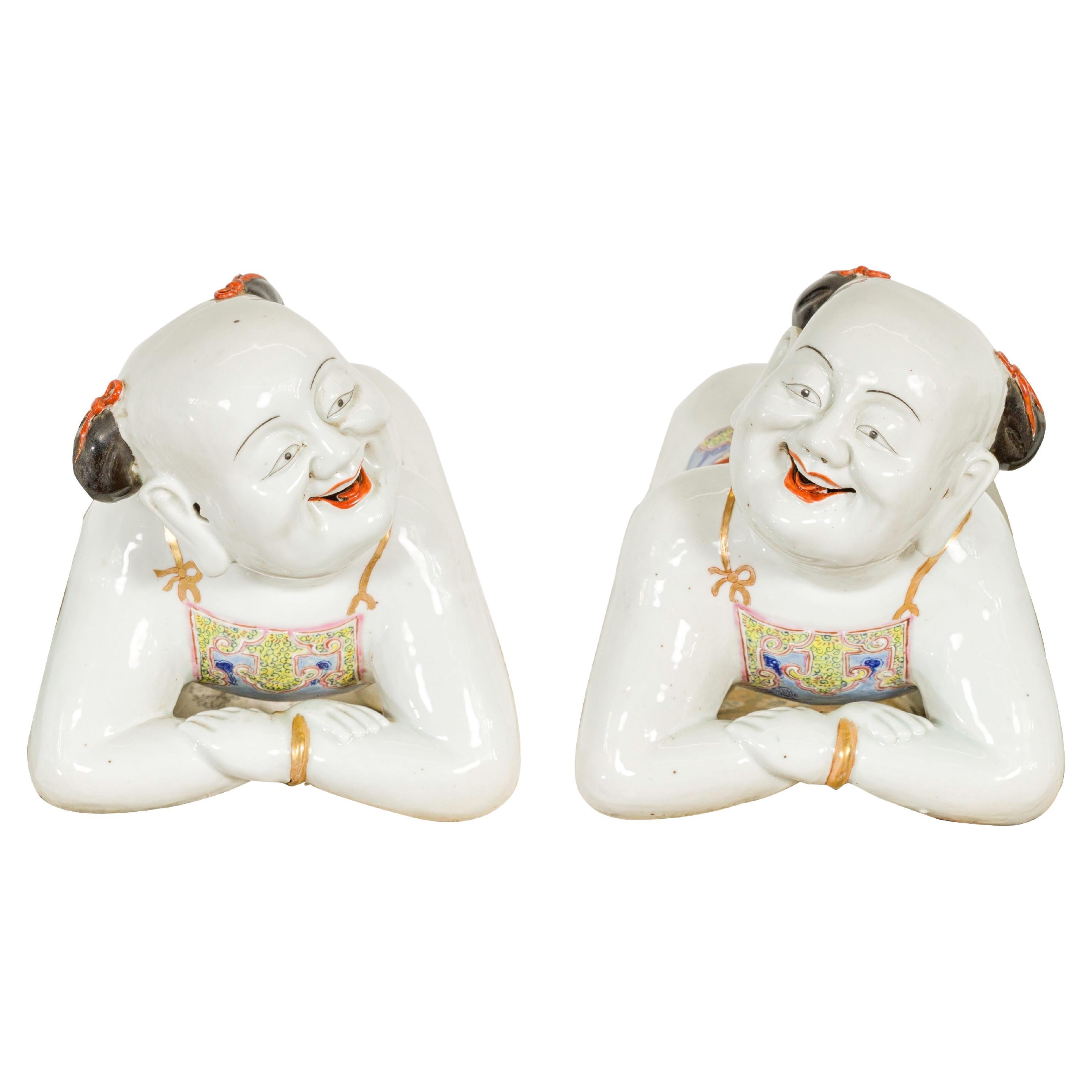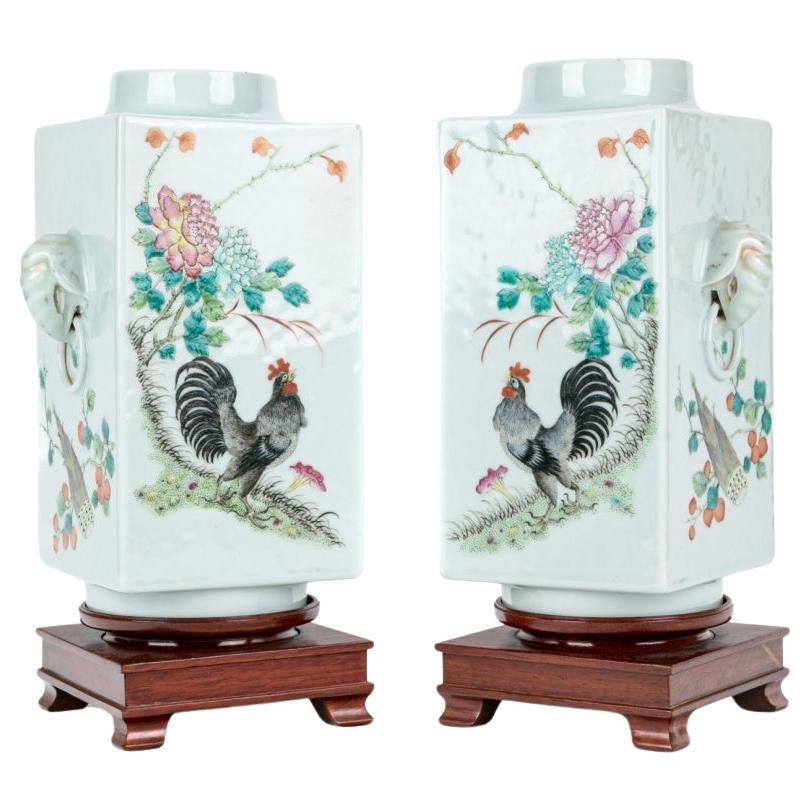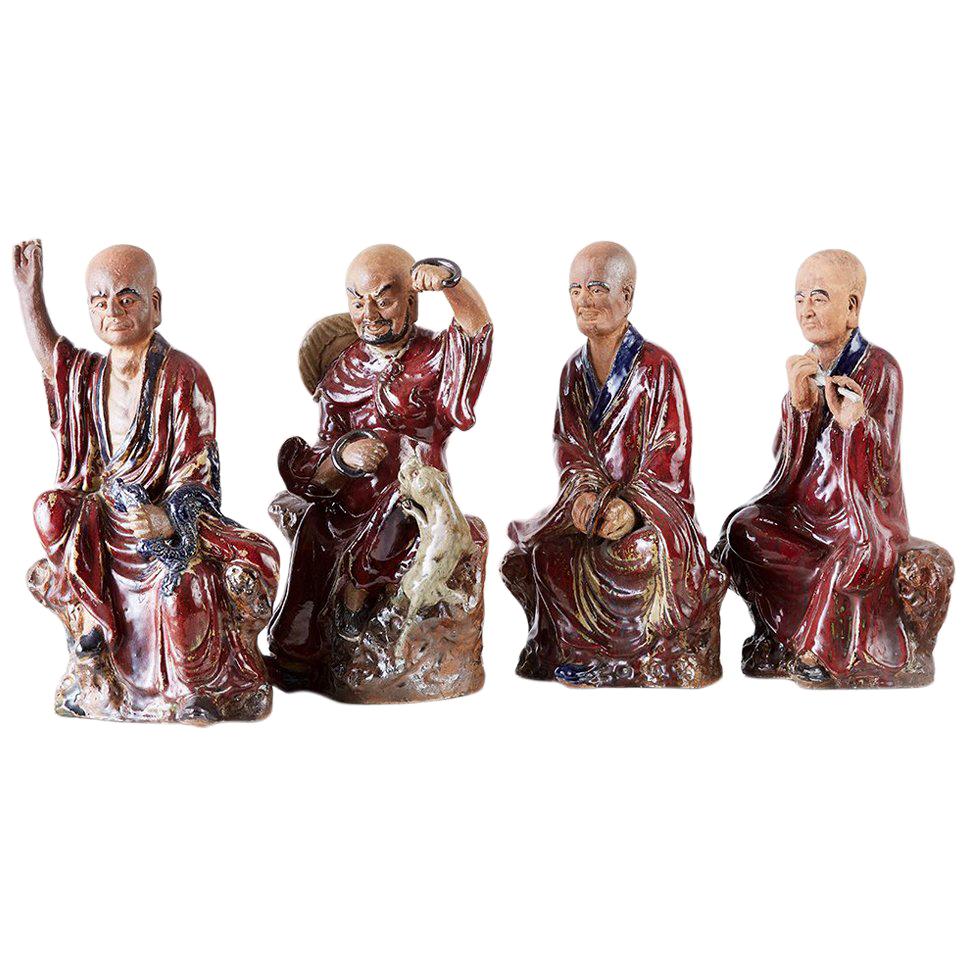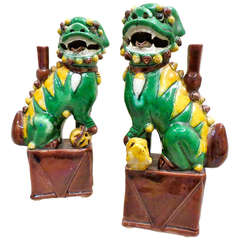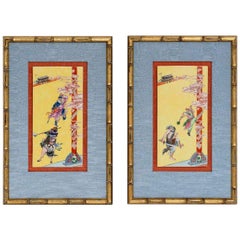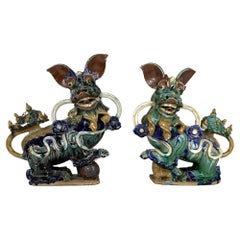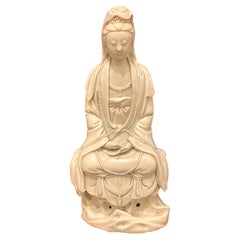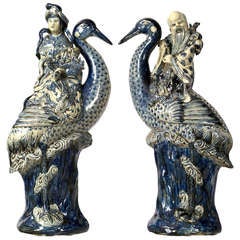
Pair of Qing Dynasty Immortals in Porcelain
View Similar Items
1 of 9
Pair of Qing Dynasty Immortals in Porcelain
About the Item
- Dimensions:Height: 20 in (50.8 cm)Width: 9 in (22.86 cm)Depth: 6 in (15.24 cm)
- Sold As:Set of 2
- Materials and Techniques:
- Place of Origin:
- Period:
- Date of Manufacture:c. 1790
- Condition:
- Seller Location:Salt Lake City, UT
- Reference Number:1stDibs: LU100171030134
Authenticity Guarantee
In the unlikely event there’s an issue with an item’s authenticity, contact us within 1 year for a full refund. DetailsMoney-Back Guarantee
If your item is not as described, is damaged in transit, or does not arrive, contact us within 7 days for a full refund. Details24-Hour Cancellation
You have a 24-hour grace period in which to reconsider your purchase, with no questions asked.Vetted Professional Sellers
Our world-class sellers must adhere to strict standards for service and quality, maintaining the integrity of our listings.Price-Match Guarantee
If you find that a seller listed the same item for a lower price elsewhere, we’ll match it.Trusted Global Delivery
Our best-in-class carrier network provides specialized shipping options worldwide, including custom delivery.You May Also Like
Pair of Famille Verte et Jaune Foo Dogs, Qing Dynasty
Located in Torino, IT
A pair of porcelain foo lions or foo dogs decorated in a pleasing combination of green and yellow enamels. The lions are portrayed seated firmly ...
Category
Antique 19th Century Chinese Ceramics
Pair of Framed Famille Jaune Porcelain Plaque Qing Dynasty
Located in Atlanta, GA
A matching pair of porcelain plaque from late Qing dynasty nicely framed in giltwood carved as bamboo. The Famille Jaune plaques were likely ...
Category
Antique Late 19th Century Chinese Qing Ceramics
Materials
Porcelain, Wood
Pair Large Antique Chinese Stoneware Guardian Lions Qing Dynasty 19th Century
Located in Katonah, NY
These magnificent Chinese temple lions are true works of art, masterfully crafted with incredible attention to detail. The bulging eyes, sharp ears, open mouth, and fluttering mane are expertly rendered, creating a pair of stunning creatures that are truly alive with energy and movement.
The expressive faces of these lions are captivating, and the fact that they are a "true" pair, meaning a male and a female facing each other, adds to the sense of interaction and action.
These lions are made of stoneware and painted in the traditional Chinese sancai three-color glaze on a light brown ground; dating to the late Qing period, they are covered in rich green, blue, and amber glazes. The intricate detailing and rich colors are breathtaking, making these lions a treasure.
Temple lions, also known as lion dogs, are celebrated for their auspicious symbolism. They are believed to protect the peace and prosperity of one's home. These lions are beautiful works of art that bring good luck and prosperity to the homes they are placed in.
Dimensions: 17" Height x 16" Length x 6 1/2" Depth.
Condition: Excellent
Price: $5,800
Background of Chinese Temple Lions:
Chinese guardian lions...
Category
Antique Late 19th Century Chinese Qing Ceramics
Materials
Stoneware
Blanc-de Chinese Figure Porcelain of Guanyin, Qing Dinasty
Located in Rome, IT
A Blanc-de Chine Figure of Guanyin Qing Dinasty
seating on a the waves, the arms lifted to the waist, dressed in loose fitting robes opening at the ches...
Category
Antique Late 19th Century Chinese Ceramics
Materials
Porcelain
$3,600 Sale Price
20% Off
Pair of Monumental Chinese porcelain fam. rose Qing Dynasty Bird Vases, 60.6 in.
Located in Gorssel, GE
Pair of Colossal Qing Dynasty Bird Vases: An extremely rare pair of Chinese porcelain famille rose vases decorated with phoenix birds and numerous birds in foliage.
High 154 cm. Per...
Category
Antique 1890s Chinese Ceramics
Materials
Porcelain
A Highly Rare Pair of Monumental Qing Dynasty Rouleau Porcelain "Dragon" Vases
Located in New York, NY
A Highly Rare Pair of Monumental Qing Dynasty Rouleau Porcelain "Dragon" Vases
A Masterful Display of 19th Century Chinese Artistry:
The mid-19th century Qing Dynasty marked a period of artistic innovation and imperial grandeur, as exemplified by this rare and monumental pair of Rouleau vases. These exceptional porcelain works, notable for their commanding size and vibrant palette, are a testament to the unparalleled craftsmanship that flourished during this era. Embellished with a dynamic tableau of dragons rendered in bold hues of red, green, blue, brown, and yellow, these vases embody both artistic brilliance and the deep cultural symbolism woven into Chinese decorative arts.
Artistic Excellence and Symbolism:
At the heart of these magnificent vases lies a visual narrative that channels the power and mystique of the dragon, a central motif in Chinese culture symbolizing imperial authority, strength, and cosmic energy. The intricate depiction of dragons in motion, intertwined amidst stylized ocean waves, conveys a sense of fluidity and dynamic movement. Each color used—the crimson reds, verdant greens, striking blues, earthy browns, and golden yellows—has been meticulously applied, reflecting a mastery of the high-fired, polychrome enameling techniques perfected during the Qing Dynasty.
The Rouleau form, with its cylindrical body, short neck, and slightly flared mouth, was a favored shape for large-scale vases in the 18th and 19th centuries. The form’s structured elegance allowed for expansive decorative panels, serving as an ideal canvas for intricate, multi-layered designs. This pair demonstrates how artisans skillfully balanced the flowing movement of the dragons with the rhythmic motifs of waves, resulting in a harmonious composition that engages the viewer from every angle.
Craftsmanship and Technique:
These vases represent the pinnacle of porcelain artistry achieved under the Qing Dynasty, showcasing techniques that reflect centuries of refined craftsmanship. The precision in the application of overglaze enamels and the expert manipulation of kiln temperatures to achieve vibrant and consistent coloration are indicative of the expertise within the imperial kilns. The dragons' scales, rendered with remarkable detail, create a textured effect that contrasts beautifully with the smooth, undulating waves, enhancing the three-dimensional quality of the design.
The depth of color and the crisp delineation of each element point to a rigorous and time-intensive process. These qualities signify the involvement of highly skilled artisans who adhered to the imperial standards set by the royal court, ensuring that each piece was a fitting representation of the empire’s wealth and cultural prowess.
Historical and Cultural Significance:
Vases of this caliber were not merely decorative; they were imbued with profound symbolic meaning and often commissioned for imperial use or gifted as prestigious diplomatic offerings. The dragon motif, deeply embedded in Chinese folklore and philosophy, was associated with the emperor himself—known as the "Son of Heaven"—and symbolized his divine right to rule. These vases also reflect the Qing Dynasty's flourishing export trade and the global fascination with Chinese porcelain during the 19th century. European collectors and royal patrons prized such pieces for their artistry and the exoticism they represented, contributing to a legacy that elevated Chinese porcelain to a revered status in the annals of decorative art history.
Provenance and Collectability:
The extraordinary scale, exceptional craftsmanship, and rarity of this pair establish them as museum-quality works. Such vases would have held a place of honor in a palace or wealthy estate, reflecting not only the owner’s status but also an appreciation for the profound cultural and artistic traditions of China. Their provenance—potentially tied to an imperial commission or significant historical collection—underscores their importance as objects of study and admiration.
Provenance:
Private American Collection, acquired in London, circa 1905.
Thence by descent to the current owners
Solomon Treasure...
Category
Antique Mid-19th Century Chinese Qing Ceramics
Materials
Porcelain
Recently Viewed
View AllMore Ways To Browse
Antique Chinese Porcelain Statues
Crane Statues
Statues Of Immortals
Antique Asian Art
Antique Japanese Art
China Dynasty
Blue Antique China
Antique Base Asian
China Blue Porcelain
Asian Bird
Japanese Meiji Art
Enameled Chinese
Asia Minor
Brown And White China
Century Furniture Ming
Antique Blue And White China
Made In Japan Hand Painted
Japanese Gilt
